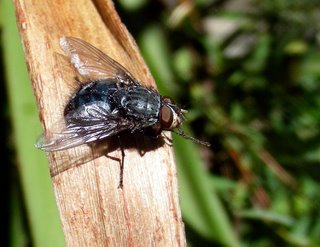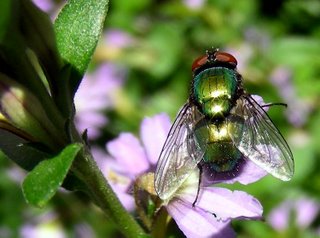 As late spring settles down into early summer, nature perks up. Flies get friskier. It'll only be a short time before the buzzing blizzards descend on the barbecue.
As late spring settles down into early summer, nature perks up. Flies get friskier. It'll only be a short time before the buzzing blizzards descend on the barbecue. Archdeacon William Paley—who introduced the watchmaker analogy to describe the work of a creator—believed he saw evidence of divine intervention in the flight of flies. In his 1802 treatise Natural Theology, he wrote:
In a spring noon, or a summer evening, on whichever side I turn my eyes, myriads of happy beings crowd upon my view. "The insect youth are on the wing." Swarms of newborn flies are trying their pinions in the air. Their sportive motions, their wanton mazes, their gratuitous activity, their continual change of place without use or purpose, testify their joy, and the exultation which they feel in their lately discovered faculties.
He imagined the flies dancing with delight in celebration of their creator. Had Paley spent less time in fly-free church and more at fly-ridden barbecues, he might have arrived at a different conclusion.
The reference to 'insect youth' comes from Thomas Gray's Ode to the Spring.
The insect youth are on the wing,
Eager to taste the honied spring,
And float amid the liquid noon:
Some lightly o'er the current skim,
Some show their gaily-gilded trim
Quick-glancing to the sun.
 Gray sounds like another man who didn't eat many charred snags amid clouds of blowies.
Gray sounds like another man who didn't eat many charred snags amid clouds of blowies. He was probably talking about newly-emerged mayflies skimming 'lightly o'er the current'. But I'd like to think that he had this calliphorid in mind when he described some flies with 'their gaily-gilded trim.' Look at that little buzzer shine!